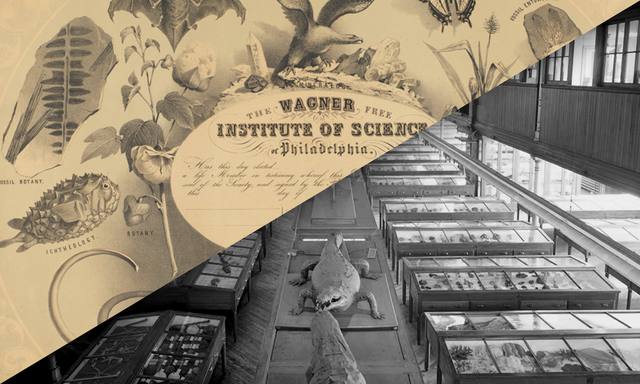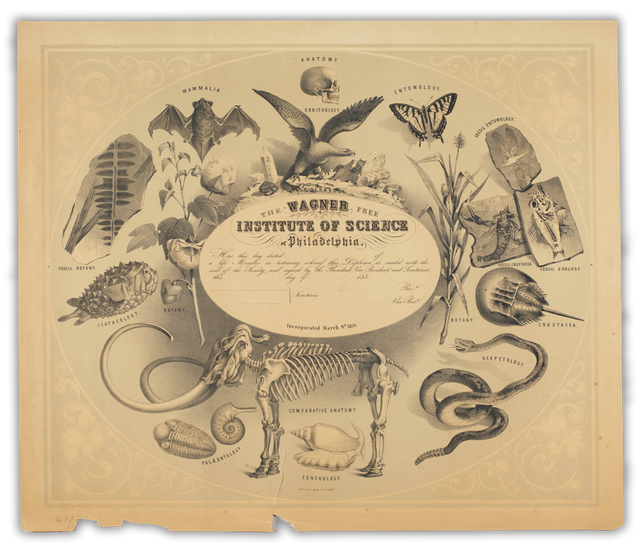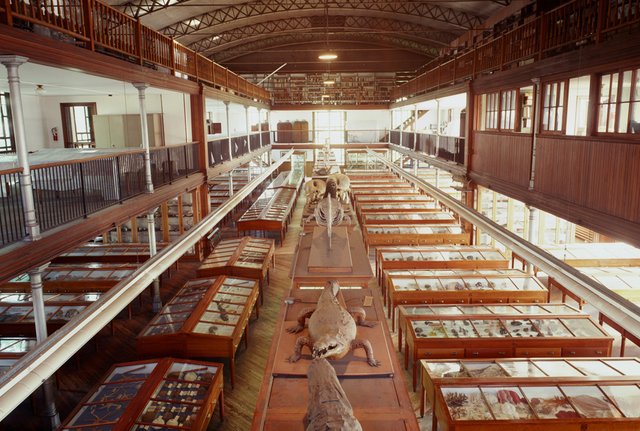The Wagner Free Institute of Science - A Museum Exploring the World of Blockchain

Hello from the staff at the Wagner Free Institute of Science!
We [@phillyhistory] are completely new to the blockchain world and still trying to figure things out how everything works. But first, who are we?
The Wagner Free Institute of Science is an educational institution and natural history museum founded in 1855 to provide free education in the sciences to the public. But, we are so much more than that! Today we continue to offer free college level evening courses, we offer standalone lectures on scientific and historic topics, and we have a robust children's education program that furthers our reach into the Philadelphia public schools. On top of that, in 1990 our building and collections were designated a National Historic Landmark that we now preserve and interpret as an example of Victorian-era natural history and science education.


- The Wagner Free Institute of Science, 17th and Montgomery Ave., Philadelphia. Left in 1865 and Right in 2005.

- Museum, Wagner Free Institute of Science. Photo by David Graham.
What drives us to explore the blockchain world?
We want more people to know about the incredible collections that we have at the Wagner. And we have the opportunity to find ways of doing this in the blockchain world thanks to the work of a Temple University public history class. The @phillyhistory blog was started and maintained by the students and professor of the graduate level course “Nonprofit Management for Historians.” At the end of the semester, they gifted the blog they created and its profits to the Wagner Free Institute of Science.
Our goal is to be able to continue the Temple University-Wagner Free Institute Fellowship Program with funds earned here. This fellowship program was created to stimulate opportunities for Temple faculty and graduate students in the creative and academic disciplines to work with the historic collections at the Wagner Free Institute of Science.

- Collection items from the library, archives, and museum at the Wagner Free Institute of Science.
How to we engage the Steemit community in what we are doing?
As we said before, we are completely new to the blockchain world. And, we may be the first and only cultural/historical institution in the Steem world (I haven’t been able to find another). How do we find and build a community in the blockchain? Who is our audience? And what can we do to engage them? Our first few posts are about how others have found inspiration in our historic collections. What else should we post about? On the flipside, who should we be following and how can we engage with what others are doing in the blockchain world?
Let me switch to the first person for a moment as the one who is writing the majority of content for the Wagner. I am Lynn, the Special Collections Librarian at the Wagner. I specialize in working with rare books, photographic materials, and archival materials. And, since working at the Wagner, natural history specimens. So, as you can see, I work with objects – providing access to them, preserving them, describing them. And I love doing this work! How can I use these skills in the Steem world? How can I fit the Steem world into my daily workflow? I also ask a lot of questions – to myself, as well as others!
I hope to be able to engage with the Steem community more effectively and more often over the next few months. And we, the Wagner, want to share with the Steem community the wonders of our history and collections. We hope to be a source of inspiration and a site of open discussion.
This post was authored by @phillyhistory, a member of the sndbox incubator. Learn more, follow @phillyhistory or begin a conversation in the comment section below.

Posted from my blog with SteemPress : https://sndbox.blog/2018/08/15/the-wagner-free-institute-of-science-a-museum-exploring-the-world-of-blockchain/
Smart idea for the Wagner Museum to explore blockchain technology. Over 100 000 artifacts is quite impressive. I’m a teacher and a history major myself, and while I don’t know any secrets regarding how to promote history and science and the great collection at your museum, I know that there is a growing education and history community on Steemit that loves to engage with interesting posts.
I'm excited to see some of the shared collections. Maybe it'd be fun to do art challenges or initiatives spurred on or influenced by your collection, to draw more steemit users together.
First off, welcome @phillyhistory, we are thrilled to have you here exploring the blockchain world. The Temple students (last Spring) who gifted you the account set the stage for something very exciting and we're very glad that your organization has decided to take this important leap! One that we believe to be an important avenue to explore as historical institutions enter a digital era.
You bring up some very important topics here and some you've already begun to address in creative ways!
Your last two posts are great examples. Simply sharing an archival image and asking the Steem community to respond is a great way to engage your readership and also begin a broader / interdisciplinary dialogue.
As you build some stake in Steem (more Steem Power makes your vote stronger), upvoting the comments and responses that you like can actually be a great incentive for your following to participate.
We're excited to explore with you!
Glad the @phillyhistory page is running again!!! I'd love to visit that Institute sometime when I head back to the states.
This groundbreaking effort with a real national treasure of an institution should go a long way towards answering the question: Can the Blockchain Help Reinvent Philadelphia's "History System"? More thinking on that question here.
I think it’s a very interesting, I’ll keep an eye out for your stance on the role of Blockchain in Natural History.
The place of history to help in recording trends of events on the blockchain cannot be overemphasized. This is because with history, the system can be effectively monitored and adequate forecast of the future can be made. Where history is lacking, one may glory in an anormaly of a "better yesterday" unknowingly.
The emergence of @phillyhistory is timely especially now that the #steem ecosystem is expereiencing so much uncertainties. I hope @sndbox's incubation will dig out the better of your lots.
If I may ask, what are your modes operandis in tracking information and facts from all categories of the blockchain? Scouters will sure make your work easier and more meaningful.
smart idea sir g
I think it's very interesting. I love history. Thanks for sending this post.